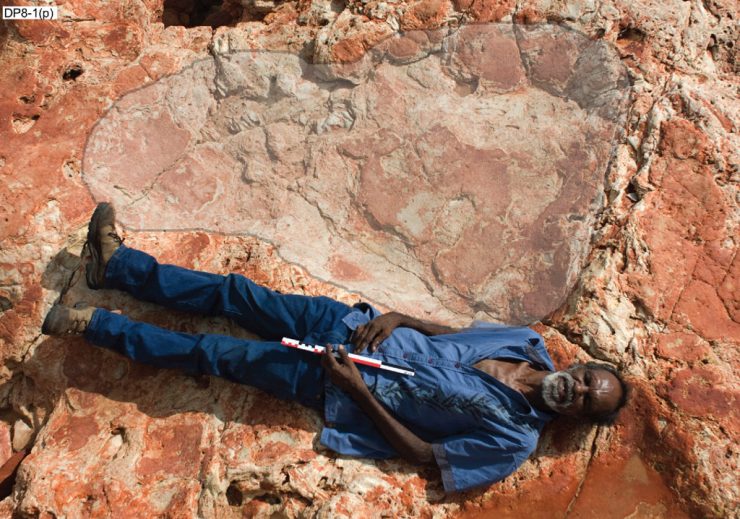Dinosaurs are probably the most well known of the extinct animals that once roamed this earth. The sheer variety within that group of reptiles makes them a curiosity. That being said, dinosaurs don’t much make news nowadays because it is quite hard to make the discovery of every single fossil appear interesting. But this time it is big news and dinosaur experts all over the world are super excited, because a footprint has been discovered that could change how dinosaurs are perceived.
Scientists from The University of Queensland’s School of Biological Sciences, as well as the James Cook University’s School of Earth and Environmental Sciences have discovered an ancient fossilized dinosaur footprint that is bigger than any that has been seen before. The details of the footprints and some other important discoveries have been published recently in the Memoir of the Society of Vertebrate Paleontology by Dr Steve Salisbury. The footprint measured at 5-foot-9-inches belonged to a long necked sauropod.
Thousands of other tracks, which are between 127 and 144 million years old were discovered in the area which has been dubbed Australia’s Jurassic Park. Evidence of 21 species of dinosaurs has been found at the site. This kind of diversity has never been seen in any other part of the world where dinosaurs roamed. The scientists have also found evidence that proves for the first time that stegosaurs lived in Australia.
In an interview with the BBC Dr Salisbury said that the presence of these tracks were known to the indigenous Goolarabooloo tribes for thousands of years and are mentioned in their oral histories and songs. The Goolarabooloo reached out to paleontologists to look at the tracks when back in 2008, the site was selected for a natural gas plant. The tribes were worried that their sacred site will be desecrated.
Once scientists got a look at the treasure trove the site contained, it was declared as a natural heritage site, and the threat of the natural gas plant was gone. Dr Salisbury and his team worked alongside the locals for over 400 hours; measuring, building casts and photographing the tracks.
“It is extremely significant, forming the primary record of non-avian dinosaurs in the western half of the continent and providing the only glimpse of Australia’s dinosaur fauna during the first half of the Early Cretaceous Period,” Dr Salisbury said.
(Writing by Ananya Dutta; Editing by Mohith Agadi)





















